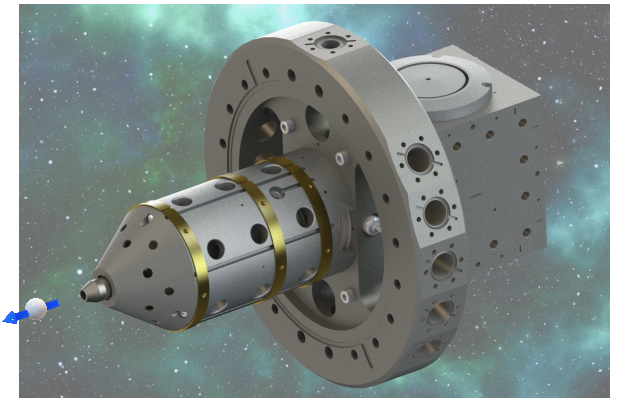
A powerful technique for exploring the conduction band is inverse photoemission. By controlling the incidence of a well-collimated electron beam, it is possible to fully characterize the conduction band (with resolution in angle and therefore in wave vector k). On the other hand, if the spin of the electrons in the beam is well controlled, all the parameters of the conduction band are fully determined. However, producing and controlling spin-polarized electrons is tricky. Spin-polarized, angle-resolved inverse photoemission devices are rare in the world, and do not allow full spin control. As a result, existing setups could not independently determine the component in the plane of the surface or perpendicular to it. Also, there were limitations on the electronic states that could be studied: those when the electron beam impinges perpendicularly on the sample, and which have the spin perpendicular to the surface.
The Laboratoire de Physique des Solides (Orsay) has built an angle- and spin-resolved inverse photoemission setup without the aforementioned limitations. The keystone of the setup is a polarized electron source – machined and assembled in the laboratory – which allows total control of the electron spin, while offering the possibility of orienting it in an arbitrary spatial direction with the aid of electromagnetic fields, a novelty in inverse photoemission.
CNRS press release: https://www.inp.cnrs.fr/fr/cnrsinfo/le-spin-dans-toutes-ses-orientations
Contact : Antonio Tejeda antonio.tejeda@cnrs.fr
https://equipes2.lps.u-psud.fr/en/antonio-tejeda/
A. F. Campos, P. Duret, S. Cabaret, T. Duden, A. Tejeda, Review of Scientific Instruments 93, 093904 (9p) (2022)
A. Campos, T. Duden, and A. Tejeda, EPJ Web Conf. 273, 01010 (2022).
A. F. Campos, T. Duden, A. Tejeda, Review of Scientific Instruments 94, 037102 (2023).